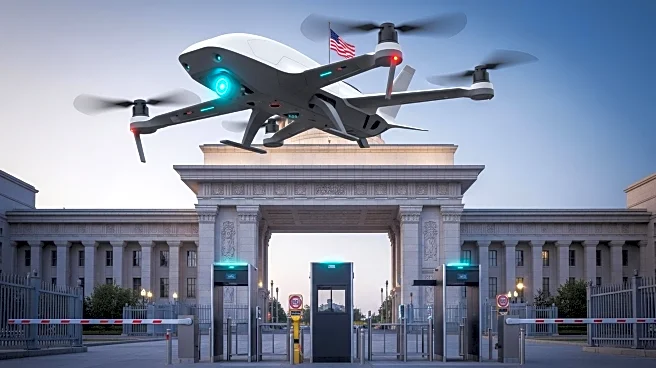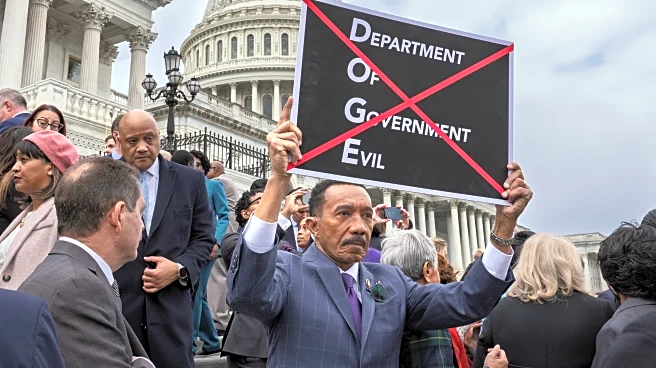What's Happening?
The Department of Defense (DOD) has reduced its civilian workforce by over 60,000 employees, achieving the goal set by Secretary Pete Hegseth to cut payroll by 5-8%. The reduction represents approximately 7.6% of the department's civilian workforce. However, officials have declined to discuss the effects of these cuts, leaving questions about the impact on productivity and morale. The reduction is part of broader policy changes aimed at redirecting resources and enhancing efficiency within the DOD. The move has sparked criticism from current and former employees who argue that the changes were ill-planned.
Why It's Important?
The reduction in civilian workforce highlights the Trump administration's focus on streamlining operations and reallocating resources within the DOD. While the cuts may lead to cost savings, they also raise concerns about the potential impact on national security and the effectiveness of the department's operations. The lack of transparency and communication about the changes has contributed to uncertainty and criticism. The situation underscores the challenges of balancing efficiency with maintaining a capable and motivated workforce, particularly in the context of national security.
What's Next?
The DOD will need to address the concerns raised by employees and stakeholders, ensuring that the workforce reduction does not compromise operational effectiveness. The department may need to implement measures to support remaining employees and enhance morale. As the Trump administration continues to focus on efficiency, further policy changes and resource reallocations are likely. The impact of the workforce reduction will be closely monitored, with potential adjustments to address any negative consequences.
Beyond the Headlines
The reduction in civilian workforce raises ethical and strategic questions about the role of civilian employees in national security operations. The focus on efficiency reflects broader trends towards cost-cutting and resource optimization in government operations. The situation highlights the importance of transparency and communication in implementing significant policy changes. Long-term, the reduction could influence the DOD's approach to workforce management and its ability to address emerging security challenges.












